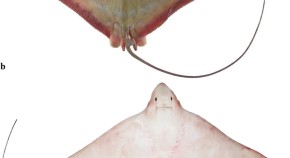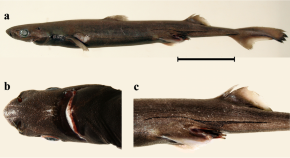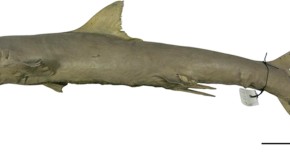Redescription of the Critically Endangered tentacled butterfly ray, Gymnura tentaculata (Valenciennes in Müller & Henle, 1841) (Myliobatiformes: Gymnuridae) from Iranian waters
Authors (first, second and last of 6)

Collection
Dave Ebert has devoted his life to studying the ocean's most elusive, dangerous and yet fascinating predator - the shark! Author of 30 books, including the “Sharks of the World”, Dave holds numerous positions including Director of the Pacific Shark Research Center, President of the American Elasmobranch Society, Scientific Advisor to the United Nations Food and Agriculture Organization, Research Associate at the California Academy of Sciences and South African Institute for Aquatic Biodiversity, and the IUCN Shark Specialist Group. He is founder of the Lost Sharks project and co-host of the podcast Beyond Jaws!
Peter is a conservation biologist with interests in marine and freshwater systems. He focuses on the collection of life history and ecological information to guide the management and conservation of biodiversity and assess population status and extinction risk. He has a background in fish biology, fisheries bycatch mitigation, and fish conservation, particularly in relation to the chondrichthyan fishes (sharks, batoids, and ghost sharks), from freshwater systems to the deep-sea. He has extensive experience in undertaking national, regional, and global extinction risk assessments for the IUCN Red List of Threatened Species. Peter's current res
Simon is a marine scientist with interests in the biodiversity, taxonomy and systematics of chondrichthyans. He gained his undergraduate degree, an MSc and a doctorate degree in biology (the latter two with distinction) at the University of Hamburg, Germany. Since completing his PhD in 2014, he has been working in the medical sector, since 2019 as a Chief Product Officer and Head of Sales National. Concurrently, he has been working on his habilitation degree and recently submitted a habilitation thesis, again focusing on the biodiversity, taxonomy and systematics of elasmobranchs. Simon has authored/co-authored more than 30 peer-reviewed arti







